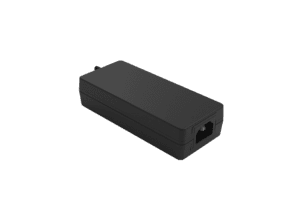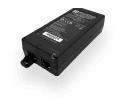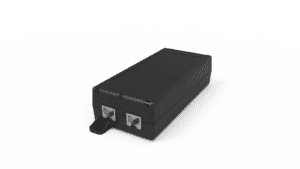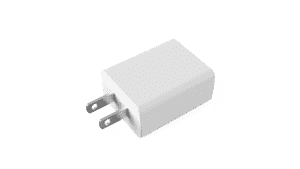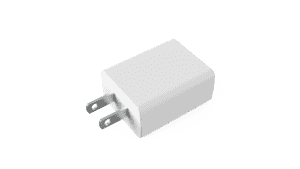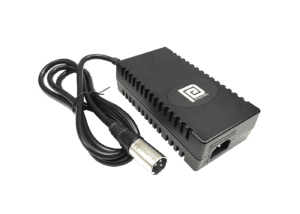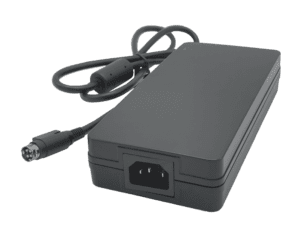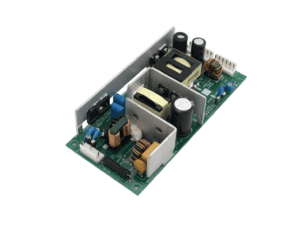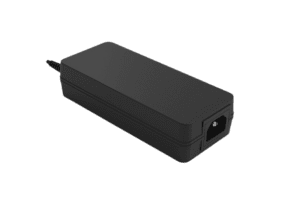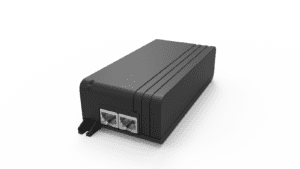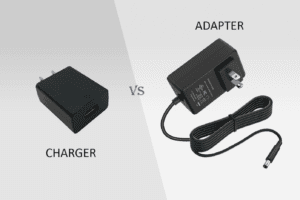BLOG
What is USB-C PD and Why is it Better Than Standard USB-C?
Table of contents

USB-C Power Delivery (PD) has been one of the most transformative advancements in connectivity over the past decade. Leading brands like Apple have fully embraced this advanced standard, with many Big Tech companies following suit. USB-C PD offers faster charging speeds, higher power outputs, broader device compatibility, ease of use, and greater overall efficiency.
In this article, we’ll explore what USB-C PD is, how it works, and why it outperforms standard USB-C. We’ll also delve into the latest developments, including versions 3.0 and 3.1, and their impact on the future of device charging technology.
What is USB-C?
USB-C is a universal connector standard that has become widely adopted for charging, data transfer, and video output. Its compact, reversible design eliminates the frustration of plugging cables in the wrong way, which was a common issue with older USB types such as USB-A and USB-B. USB-C supports various protocols, including Power Delivery (PD) DisplayPort, HDMI, and Thunderbolt, making it a highly versatile solution for modern devices.
While USB-C offers improved connectivity, its standard power output is limited. Most devices using standard USB-C connections can deliver a maximum of 15 watts (W), which is sufficient for charging smartphones and smaller devices but falls short for larger electronics like laptops or monitors. This is where Power Delivery (PD) makes a difference.
What is USB-C Power Delivery (PD)?
USB-C Power Delivery (PD) is a specification that expands the functionality of the standard USB-C connector by significantly increasing its power output and enhancing its data transfer capabilities. USB-C PD allows devices to draw much more power than they would with a standard USB-C connection, enabling faster charging and supporting larger, more power-hungry devices.
The key to USB-C PD’s flexibility lies in its ability to negotiate the exact amount of power needed by the device being charged. This dynamic power negotiation allows devices to receive just the right amount of power without the risk of overcharging or overheating, which makes USB-C PD far more efficient and safer than standard USB-C.
USB-C PD Versions: PD 3.0 and PD 3.1
Over the years, the USB Power Delivery specification has evolved, with the most recent versions—PD 3.0 and PD 3.1—bringing significant improvements in power delivery and overall functionality.
USB-C PD 3.0: A Leap in Power and Efficiency
USB-C PD 3.0, introduced by the USB Promoter Group, marked a major step forward in USB technology. One of its most notable features is its ability to deliver up to 100W of power, which is a significant improvement over the 15W limit of standard USB-C. This higher power output makes USB-C PD 3.0 suitable for charging larger devices, such as laptops, desktop monitors, and external hard drives.
In addition to its increased power output, USB-C PD 3.0 also offers more efficient power management and data transfer. Devices can communicate with chargers to request the exact amount of power they need, reducing energy waste and preventing overcharging. This dynamic power negotiation is a significant upgrade over standard USB-C, where the power output is fixed and cannot be adjusted based on the device’s needs.
USB-C PD 3.1: Expanding Power Capabilities
While USB-C PD 3.0 was a major improvement, USB-C PD 3.1 takes things even further by increasing the maximum power output to a staggering 240W. This expanded power capacity allows USB-C PD 3.1 to support an even wider range of devices, including power-hungry peripherals like gaming laptops, desktop monitors, and other high-performance electronics.
USB-C PD 3.1 not only delivers more power but also improves safety and efficiency. With USB-C PD 3.1, devices can still dynamically negotiate power requirements, ensuring they receive the exact amount of power they need without the risk of damage. The ability to deliver up to 240W of power opens up new possibilities for USB-C PD, making it a more versatile solution for both consumer electronics and industrial applications.
Key Features of USB-C PD: Why It’s Better Than Standard USB-C
USB-C PD offers several key advantages over standard USB-C, particularly when it comes to power delivery, charging speed, and compatibility. Here’s a breakdown of why USB-C PD is better than standard USB-C.
1. Increased Power Delivery
Perhaps the most significant advantage of USB-C PD over standard USB-C is its ability to deliver far more power. As mentioned earlier, standard USB-C is limited to 15W of power output, however, this power limit makes it unsuitable for charging larger devices like laptops or gaming consoles.
USB-C PD, on the other hand, can deliver up to 100W of power with PD 3.0 and up to 240W with PD 3.1. This increase in power delivery means that USB-C PD can be used to charge a much wider range of devices, from smartphones and tablets to larger electronics like laptops, monitors, and even some desktop computers.
2. Faster Charging
In addition to delivering more power, USB-C PD enables much faster charging times for compatible devices. This is especially important for users who are constantly on the go and need to charge their devices quickly. With USB-C PD, devices can be charged in a fraction of the time it would take with standard USB-C.
For example, a smartphone that might take two hours to charge with standard USB-C could be charged in under an hour with USB-C PD. Similarly, a laptop that might take several hours to charge with a standard charger can be charged much more quickly with USB-C PD.
3. Dynamic Power Negotiation
One of the standout features of USB-C PD is its ability to dynamically negotiate power between the charger and the device. This is a significant improvement over standard USB-C, where the power output is relatively fixed. With USB-C PD, the device being charged can communicate with the charger to request the exact amount of power it needs at any given time.
This dynamic power negotiation ensures that devices receive the optimal amount of power, preventing overcharging and reducing energy waste. It also improves safety by reducing the risk of overheating and electrical faults.
4. Universal Compatibility
USB-C PD is designed to be a universal solution for charging and powering a wide range of devices. While standard USB-C is primarily limited to smartphones, tablets, and smaller gadgets, USB-C PD can power larger devices like laptops, desktop monitors, and even some gaming consoles. This universality makes USB-C PD a more future-proof solution, as users can use a single charger to power multiple devices.
5. Enhanced Safety Features
USB-C PD introduces several safety features that make it a more reliable and efficient charging solution. These safety features include overcurrent protection, overheating protection, and voltage regulation. By ensuring that devices receive only the power they need, USB-C PD reduces the risk of electrical faults and extends the lifespan of both devices and chargers.
Programmable Power Supplies (PPS): A Key USB-C PD Feature
One of the most exciting developments in USB-C PD is the introduction of Programmable Power Supplies (PPS). PPS technology allows chargers to dynamically adjust the voltage and current they deliver based on the needs of the connected device. This automatic programmability makes USB-C PD even more efficient and versatile, particularly for high-end devices like smartphones and laptops. Unlike fixed-output power supplies, which deliver a constant voltage and current, PPS units automatically adjust to meet the specific power requirements of different devices.
PPS is particularly useful in applications where precise and adjustable power levels are needed, such as in research and development, industrial settings, and high-performance consumer electronics. In the context of USB-C PD, PPS allows devices to receive a tailored power profile, ensuring they are charged more efficiently and safely.
Advantages of PPS
- Efficient Power Management: PPS enables more efficient power management by allowing chargers to adjust their output in real-time. This reduces power loss and heat generation during charging, improving overall energy efficiency.
- Customizable Power Delivery: With PPS, devices can receive the exact amount of power they need at any given time, improving charging times and reducing wear on batteries.
- Enhanced Safety: PPS reduces the risk of overheating and battery damage by ensuring that devices are not overcharged or subjected to excessive current. This makes it a safer option for high-performance devices like gaming laptops and smartphones.
Why USB-C PD is the Future of Charging
As USB-C PD continues to evolve, it is clear that this technology represents the future of charging and power delivery. Its combination of faster charging, higher power delivery, and broader compatibility makes it a superior option compared to standard USB-C or other legacy universal serial buses, and its growing adoption across devices and industries is a testament to its versatility.
Support for Larger Devices
One of the key reasons USB-C PD is seen as the future of charging is its ability to power larger, more power-hungry devices. While standard USB-C is limited to smaller gadgets like smartphones and tablets, USB-C PD can deliver enough power to charge laptops, monitors, and even some desktop computers. As more devices adopt USB-C PD, we can expect to see a shift away from proprietary chargers and toward a more unified charging standard.
Eco-Friendly and Cost-Effective
As USB-C PD becomes the universal standard for portable electronic devices, the tech world is becoming more environmentally friendly. By reducing the number of chargers and cables needed to power different devices, we can eliminate clutter worldwide. Relying on just one cord to charge all our devices significantly reduces electronic waste. Moreover, USB-C PD’s dynamic power negotiation capabilities ensure that devices use only the necessary power, improving energy efficiency and reducing electricity consumption.
Widespread Adoption Across Industries
Another reason USB-C PD is the future of charging is its widespread adoption across multiple industries. From consumer electronics to industrial applications, USB-C PD is being used to power an ever-growing range of devices. Its ability to deliver high levels of power while maintaining safety and efficiency makes it a compelling option for both consumers and businesses.
CLIENT'S QUOTE
Phihong's Power-Over-Ethernet solutions have transformed our network, boosting efficiency and reducing costs. Their seamless integration has simplified both installation and maintenance.
Explore More with Phihong USA
As we conclude our exploration of the USB-C, it’s evident how these innovations are evolving like never before. Phihong USA stands at the forefront of this technological advancement, offering a diverse range of power solutions designed to meet the evolving needs of modern industries.
Phihong USA’s extensive product lineup includes:
- Power over Ethernet (PoE) Solutions: Delivering reliable power and data transmission over a single cable, ideal for simplifying network installations and reducing costs.
- AC/DC Adapters and Power Supplies: From compact adapters to industrial-grade power supplies, Phihong provides solutions that ensure efficiency and reliability in various applications.
- Battery Chargers: Customizable chargers for lithium-ion and lead-acid batteries, supporting a wide range of power requirements for mobility and industrial applications.
- Medical Power Supplies: Specialized power solutions designed to meet the stringent requirements of the healthcare industry, ensuring safety and reliability.
Phihong USA is committed to innovation and excellence, continually developing products that meet the highest standards of performance and reliability. Their global reach and dedication to customer support make them a trusted partner in powering the future.
Here are some useful links to explore Phihong USA’s offerings further and bring in new potential clients:
Visit Phihong USA to discover how their advanced power solutions can support your business needs. Whether you’re looking to upgrade your network, or find reliable power supplies, Phihong USA has you covered.
By choosing Phihong USA, you’re partnering with a leader in power technology, ensuring your operations run smoothly and efficiently with top-tier power solutions.

Contact Our Team Today!
Our dedicated sales team and international partners are prepared to support you with your latest projects and initiatives globally.
FAQs
How does USB-C PD compare to other fast charging technologies like Qualcomm Quick Charge or proprietary charging systems?
USB-C PD differentiates itself from other fast charging technologies, such as Qualcomm Quick Charge or various proprietary systems, through its universal compatibility and superior power delivery capabilities. While Qualcomm Quick Charge and proprietary systems are tailored to specific brands or devices, often requiring proprietary chargers or cables, USB-C PD follows an open standard that works across a broad spectrum of devices, including smartphones, laptops, tablets, and peripherals. This means users can rely on a single type of charger for multiple devices, reducing the need for various adapters and cables. Additionally, USB-C PD’s dynamic power negotiation feature allows it to adapt its power output based on the needs of the connected device, providing optimal charging speeds while minimizing energy waste. This flexibility makes USB-C PD a more versatile and future-proof solution compared to fixed or brand-specific fast charging technologies. As a result, USB-C PD not only simplifies user experience but also enhances the overall efficiency and convenience of charging across different types of electronics.
Can USB-C PD be used with devices that do not explicitly support Power Delivery?
Yes, USB-C PD is designed to be backward compatible with devices that do not explicitly support Power Delivery. When you connect a device that only supports standard USB-C to a USB-C PD charger, the charger will automatically adjust its output to match the maximum power that the device can handle, which is typically up to 15W for standard USB-C devices. This backward compatibility ensures that USB-C PD chargers can be used universally, even with older or non-PD devices, without any issues. For devices that do support USB-C PD, the charger can provide higher power levels and faster charging speeds, but it will still safely operate at lower power levels for devices that do not. This universal approach helps in streamlining the charging process and minimizes the need for multiple chargers, making USB-C PD a practical and efficient choice for a wide range of devices.

